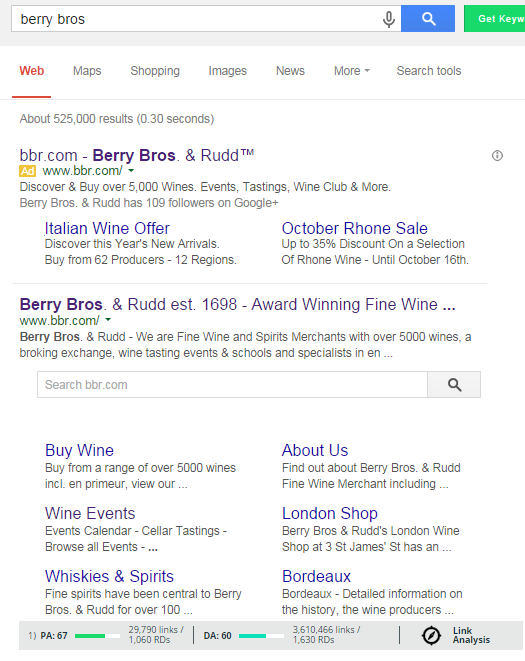Google’s New Sitesearch Box: Valuable Tool or Cool New Toy?
So when Google released a new and improved sitelinks search box in early September, we started wondering: is this a valuable addition to searching for site-specific content, or is this just a tool that, despite being new and cool, will yield insignificant change in the end?
This version features a larger search box placed below the first search result and above the suggested sitelinks, as you can see with this wine retailer example:
Using schema – pieces of code that you put on your website to help search engines return more informative results – to markup webpages with the ‘Potential Action’ property to alert Google of the change, you can send users straight from the sitelinks search box to your site’s search results page. The idea is to streamline the whole user search process for a quicker, more accurate experience.
That sounds great, right? We set out to see if this is really the case. Using the same wine retailer example, I typed in ‘pinot grigio’ to see what would happen, and voila! It redirected me to their product page and I was able to see all wines relating to ‘pinot’ and ‘grigio’. Pretty handy if you were looking for the right bottle in a rush.
But this isn’t the case for many sites. Another example of a site testing this new search box is www.coolhunting.com – an ‘inspiration’ site with stories, videos, and interviews that highlight creativity in design, technology, culture, style, food, and travel. But when you type in your search term – say, ‘electric cars’ – you get quite a different result. Instead of taking you straight to the ‘Cool Hunting’ site, up pops another SERP with ads lining the top, posing a potential threat to the site’s traffic as users might instead click on a competing page.
As this update is still in the early stages, there are bound to be some hiccups, or perhaps Cool Hunting didn’t mark their site up correctly. In any case, this example highlights the potential negative effects of the new sitesearch.
But for those sites who feel their own search results page is more intuitive than Google’s, this new tool might be worth installing. It would save your users lots of time and give them a better experience with your brand. Only time will tell…





